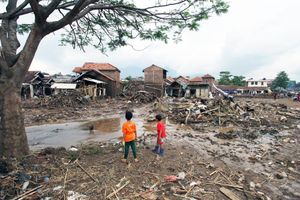Treatment GuideJust DiagnosedSex & DatingAfrican AmericanStigmaAsk the HIV DocPrEP En EspañolNewsVoicesPrint IssueVideoOut 100
CONTACTCAREER OPPORTUNITIESADVERTISE WITH USPRIVACY POLICYPRIVACY PREFERENCESTERMS OF USELEGAL NOTICE
© 2025 Pride Publishing Inc.
All Rights reserved
All Rights reserved
Scroll To Top
By continuing to use our site, you agree to our Privacy Policy and Terms of Use.
Remember when three-drug combinations began in 1996? The advice was to treat early and treat hard. This meant starting antiretrovirals when CD4-cell counts dipped below 500 or viral loads rose above 20,000. Viral load data had just become available, so we had little understanding of what were really low or high viral counts and what those levels implied about long-term survival. All we knew then was that once CD4 counts fell below 500, you were on a relentless downhill curve. Then over the next five years we saw some patients who just walked in with CD4-cell counts well below 200 and viral loads up to 100,000 or more. And when we started them on the three-drug cocktails, they did OK too. We learned that the success of treatment (as measured by the ability of the first regimen to drive the viral load to undetectable levels and hold it there) was just as likely if the viral load was well above 20,000. We also learned that CD4 count increases, and hence successful immune reconstitution, would then follow even if CD4 counts were very low to start with. This led to a change in U.S. treatment guidelines, which then recommended holding therapy until CD4 counts fell below 350 or viral loads were above 55,000. European guidelines were even more liberal, setting the initiation levels for CD4s at 200 and viral loads at 100,000. Eventually many U.S. physicians began using numbers closer to the Europeans, since it seemed logical that this might reduce long-term toxicity issues as long as effectiveness was not compromised. But based on reports from the 13th Conference on Retroviruses and Opportunistic Infections, held in February in Denver, delaying treatment might actually cause more toxicity and increase the risk of HIV progression or death. The ongoing HIV Outpatient Study looked for the development of peripheral neuropathy, kidney failure, and lipoatrophy in more than 2,000 patients who were started on treatment between 1996 and 2005. Then they stratified the patients, based on their CD4 counts at the time therapy was started, and compared the likelihood of the toxicities. The data showed that patients with CD4 counts above 350 when they began their first regimens were 60% less likely to develop kidney failure or lipoatrophy and 30% less likely to report peripheral neuropathy than those who started with a CD4 count less than 200. Another interesting finding was that if the toxicity didn't appear in the first six to 12 months, then the chance of it appearing continued to decline over time. In a large collaboration of studies from the United States, Canada, and Europe, information on almost 11,000 patients initiating therapy after 1996 was gathered to see if HIV progression was greater in those whose CD4-cell counts were lower when therapy began. After a median of three years' observation, the risk of either progression to AIDS or death was almost three times greater in the patients who began treatment with CD4 counts of less than 200 compared to the group in the 201'350 range. Those who had CD4 counts above 350 had a 26% less chance of progression to AIDS or death when compared to the mid-range group. On the more hopeful side, some data presented indicated that the incidence of heart attacks has declined since 2000. The risk of heart attacks was mostly associated with standard factors such as diabetes, hypertension, and elevated lipids. Less risk was attributed to the use of protease inhibitors, and no risk was found in the use of nonnucleoside reverse transcriptase inhibitors. Specifically, the reduction in heart attacks was attributed to the increased use of lipidlowering agents and not related to changes in antiretroviral therapy. Perhaps heart disease may not be as big a time bomb as we feared it might be with long-term antiretroviral use. So while we all need to keep our heads up about changes in HIV treatments, we'd better be ready to duck on this one'the pendulum could be about to swing again. Bowers is board-certified in family practice and is a senior partner with Pacific Oaks Medical Group, one of the largest U.S. practices devoted to HIV care. E-mail him at dan@hivplusmag.com.
From our Sponsors
Most Popular
BREAKING NEWS: Trump admin moves to end federal HIV prevention programs
March 18 2025 6:10 PM
Grindr is reminding us why jockstraps are so sexy and iconic
May 02 2025 5:36 PM
Trump's orders prompt CDC to erase HIV resources
January 31 2025 5:29 PM
Celebrating Black History Month with our annual African American issue
February 01 2025 3:28 PM
Tyler TerMeer vows to continue to fight for health care for all
January 28 2025 3:00 PM
Discover the power of Wellness in your life
March 26 2025 12:41 PM
Plus: Featured Video
Latest Stories
BREAKING: Supreme Court rules to save free access to preventive care, including PrEP
June 27 2025 10:32 AM
HRC holds 'die-in' to protest Trump health care cuts
April 28 2025 2:11 PM
Season 4 of The Switch on resilience & radical self-love returns this spring
March 26 2025 12:20 PM
Lexi Love comes out as HIV+ after Trump deletes federal resources
January 23 2025 11:23 AM
A camp for HIV-positive kids is for sale. Here's why its founder is celebrating
January 02 2025 12:21 PM
“I felt like a butterfly”: Niko Flowers on reclaiming life with HIV
July 23 2025 12:22 PM
1985: the year the AIDS crisis finally broke through the silence
June 26 2025 11:24 AM
Trump admin guts $258 million in funding for HIV vaccine research
June 03 2025 3:47 PM
Two right-wing Supreme Court justices signal they may uphold access to PrEP and more
April 21 2025 4:10 PM
Broadway's best raise over $1 million for LGBTQ+ and HIV causes
April 03 2025 7:15 PM
Jess King is here to help you live your happiest, healthiest life yet
March 24 2025 4:35 PM
Dancer. Healer. Survivor. DéShaun Armbrister is all of the above
July 02 2025 8:23 PM
VIDEO: A man living with HIV discusses his journey to fatherhood
June 10 2025 4:58 PM
500,000 Children at Risk: PEPFAR Funding Crisis
April 08 2025 3:51 PM
The Talk Season 5 premieres this spring with HIV guidance for the newly diagnosed
March 26 2025 1:00 PM
Gerald Garth is keeping people of color happy and healthy through trying times
March 11 2025 3:38 PM
Plus nominated for 2025 GLAAD Media Award
January 22 2025 12:42 PM
Trending stories
Recommended Stories for You













































































